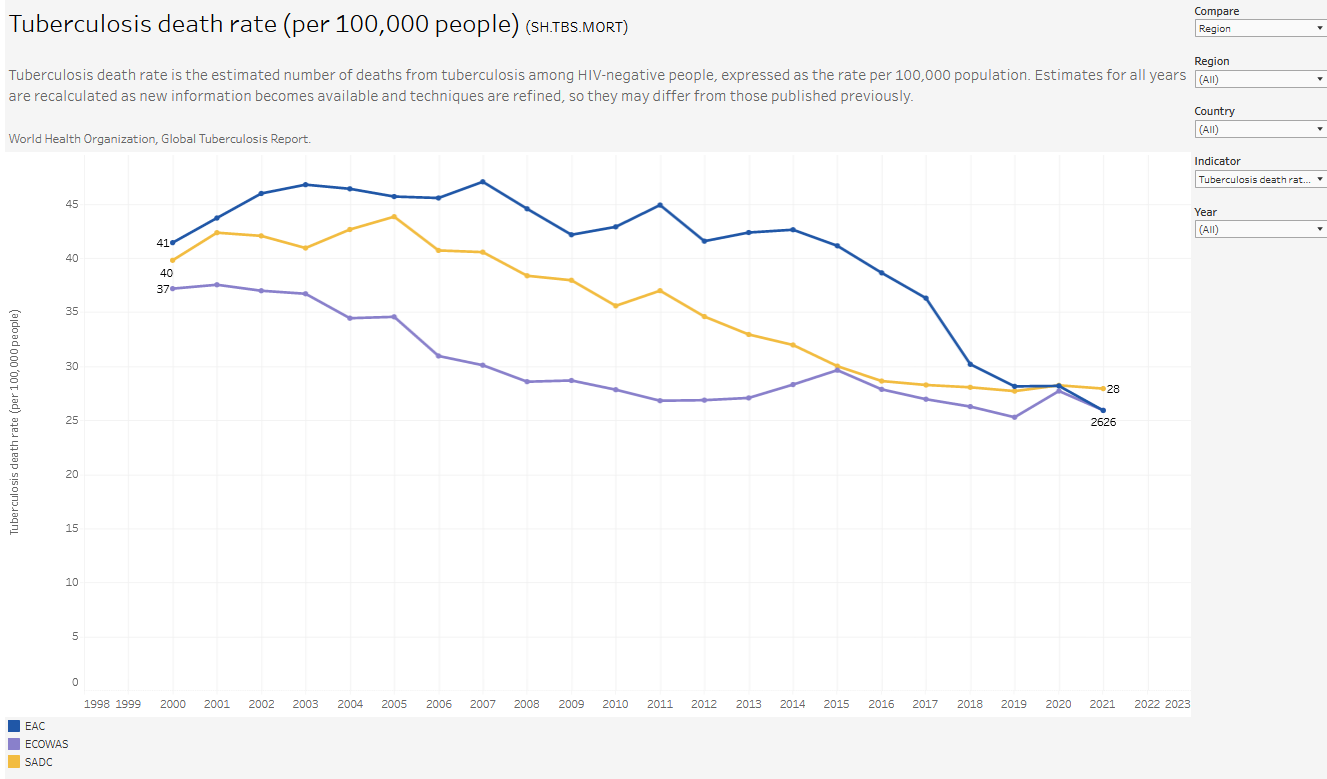Introducing TB Mortality Number per 100,000 People
The WHO (World Health Organization) defines TB mortality as
the number of deaths caused by tuberculosis (TB) among people with TB, regardless of their HIV status, per 100,000 population. TB mortality is an important indicator of the severity of the TB epidemic and the effectiveness of TB control programs.
In general, high TB mortality rates suggest inadequate TB control measures, while low rates indicate effective control efforts. TB mortality rates are often higher in low- and middle-income countries, where access to TB diagnosis, treatment, and care may be limited. To reduce TB mortality, the WHO recommends timely diagnosis and treatment of TB cases, including those with drug-resistant TB, as well as addressing the social determinants of TB, such as poverty, malnutrition, and poor living conditions.
Although the Sustainable Development goals (Goal 3 Target3.3) replaced the Millennium Development Goals (MDGs)(Target 6C Indicator 6.9) both programs specifically call for the end of communicable disease epidemics such as TB and HIV. The combined effects of advances in drug therapy, shortening of regimens, introduction of TB preventative therapy and strengthening of health services should make it easier for people to stay compliant on TB treatment and thus improve TB disease outcomes however, TB deaths have been slow to decline.
Of particular concern was the effect of COVID19 on TB disease programs: Globally, TB deaths increased from the first time since 2005; 22.7mil children missed out on basic vaccinations in 2020; 92% of national health systems were disrupted at end 2021 and 115,500 precious healthcare workers were lost. For these reasons, cause specific death rates need close
monitoring and decisive action over the next 5 years.
Despite a cure for TB, what are the disease specific death rates for TB patients in Southern, Eastern and Western regions of Sub-Saharan Africa ?

Live
The interactive version is available on Tableau Public. See the guides for interacting with the dashboard, and downloading the data for World Bank DataBank on the project site.
This is part of the Armchair TB Project. Find out more about the project, and related content here.